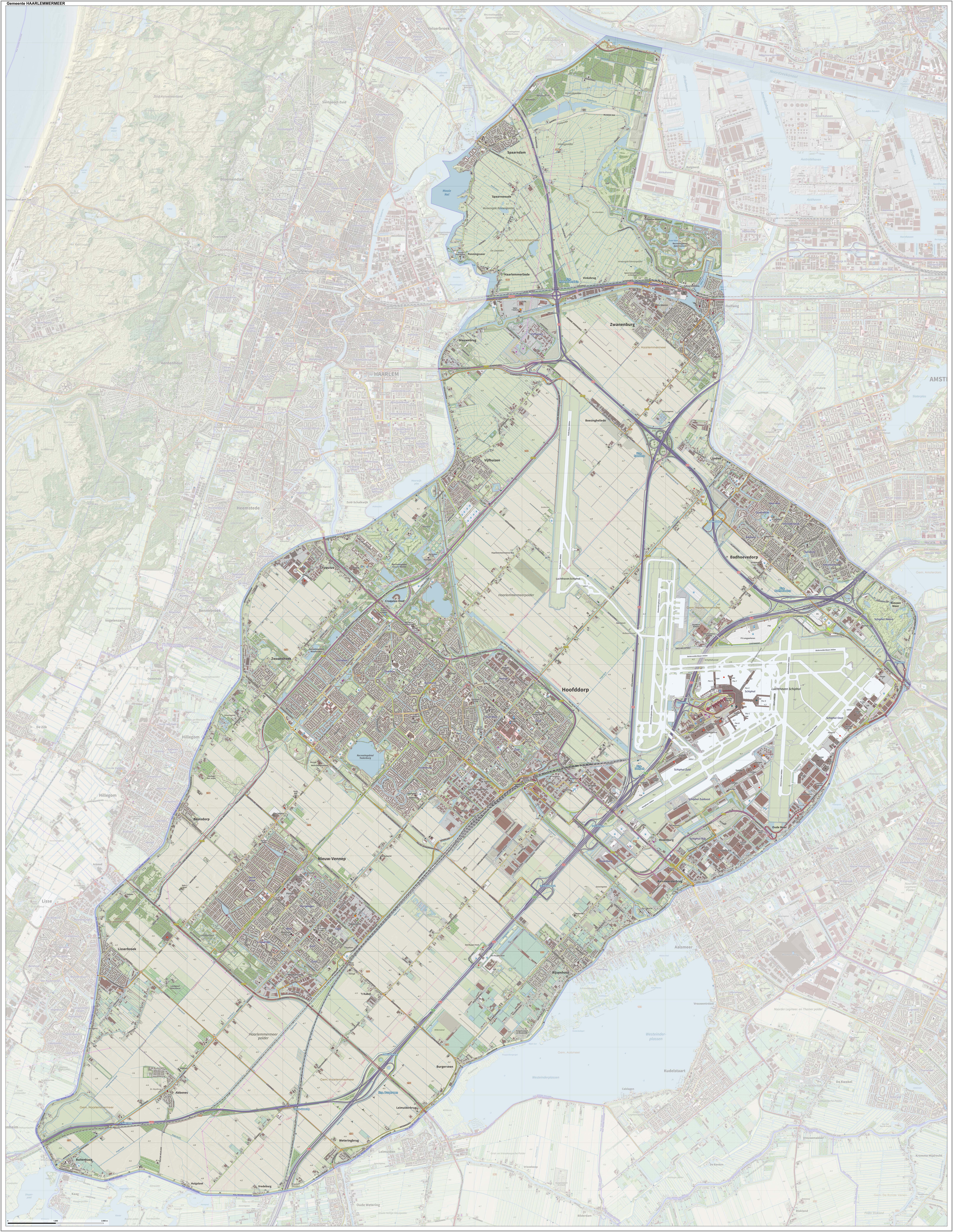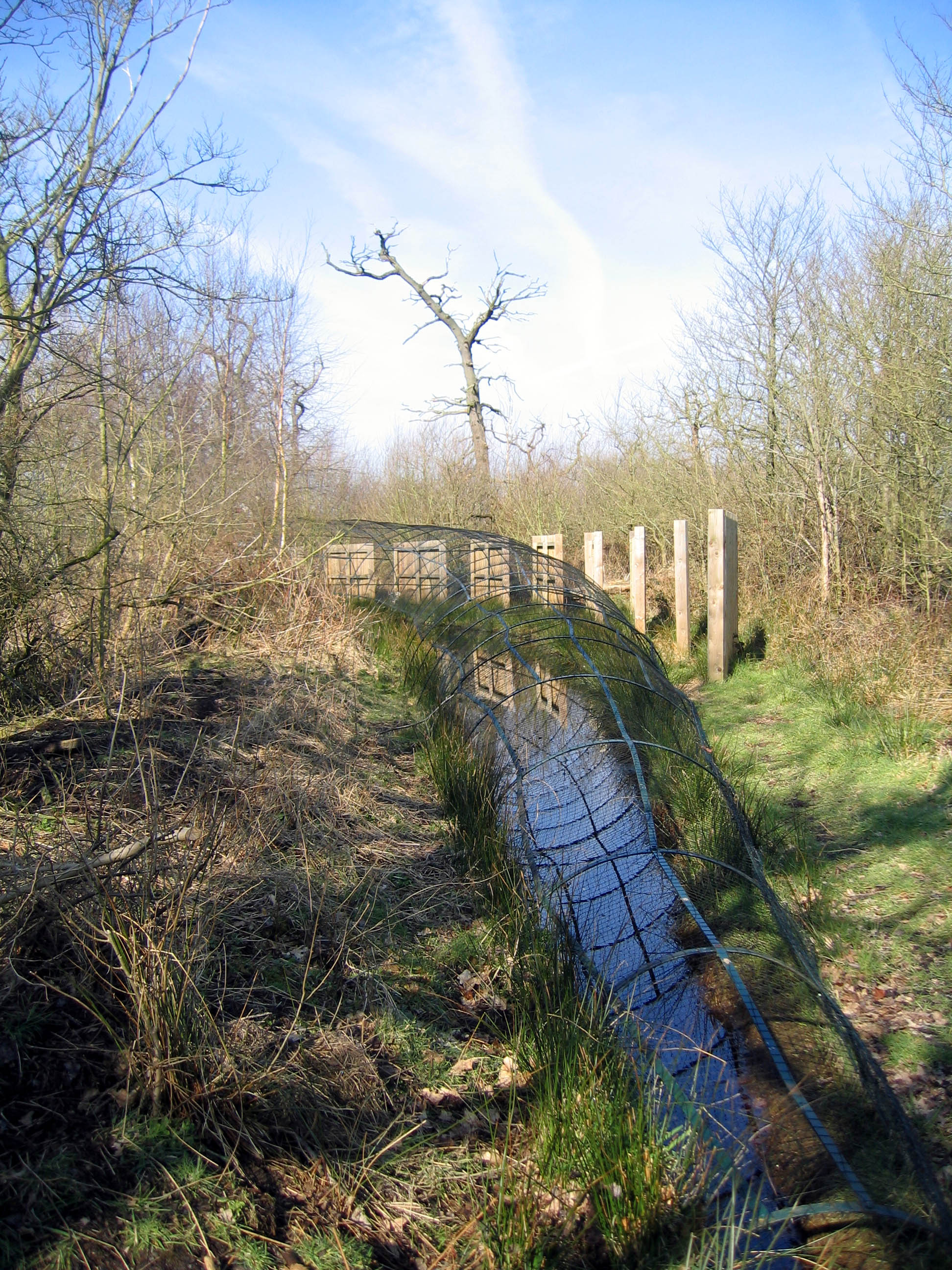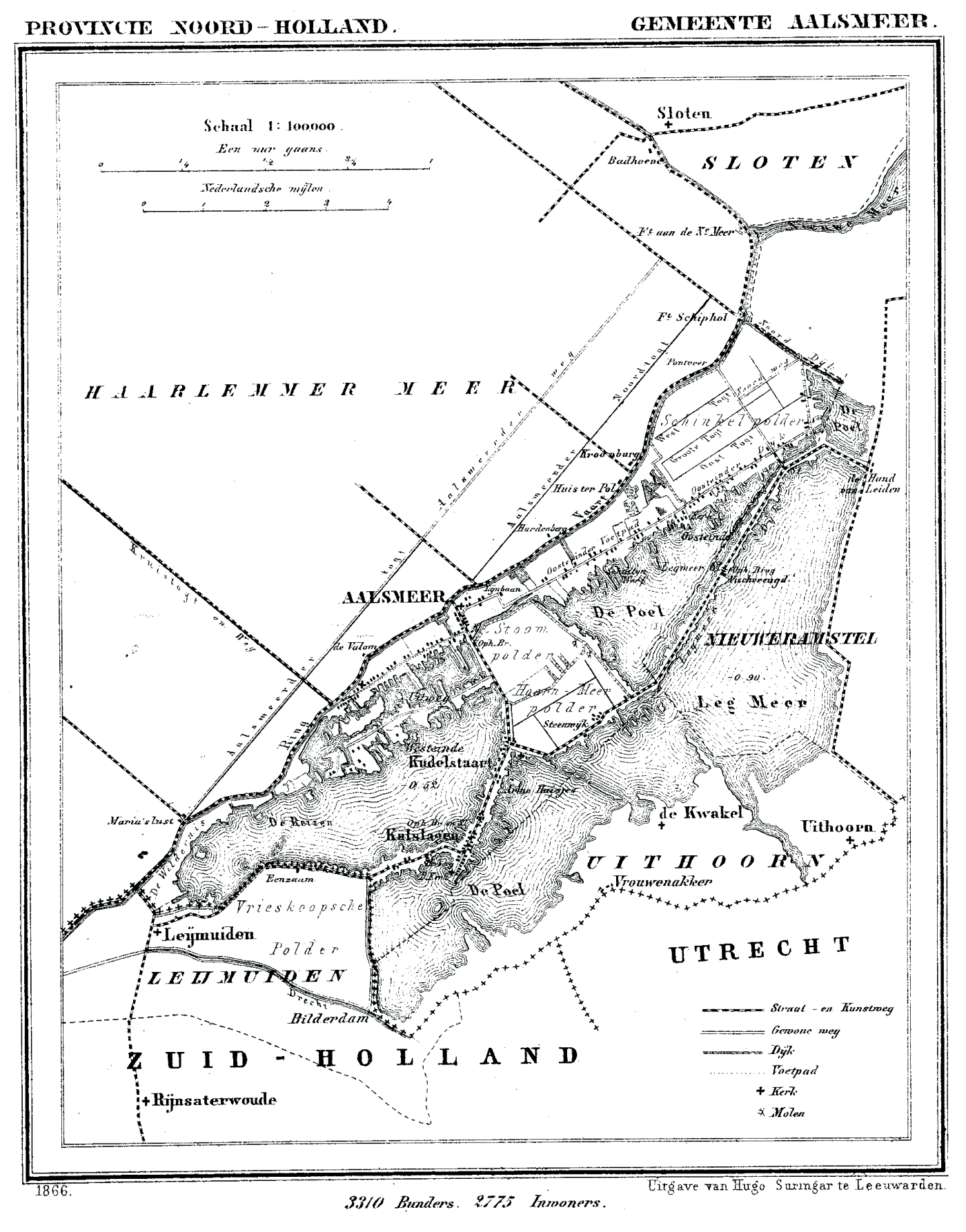|
Vijfhuizen
Vijfhuizen is a village in the Dutch province of North Holland. It is a part of the municipality of Haarlemmermeer, and lies about 4 km southeast of Haarlem. In January 2011, the town of Vijfhuizen had 4387 inhabitants. The built-up area of the town was 0.48 km2, and contained 728 residences.Statistics Netherlands (CBS), ''Bevolkingskernen in Nederland 2001' Statistics are for the continuous built-up area. The wider statistical area of Vijfhuizen has a population of around 2800.Statistics Netherlands (CBS), ''Gemeente Op Maat 2004: Haarlemmermeer'' From 2002 a new Vinex location has been built along Vijfhuizen, expanding the size of the village to twice the size, approximately 5,000 inhabitants Vijfhuizen is located on the northwest side of the Haarlemmermeer on the ring canal opposite Haarlem. To the south of it lies Cruquius,_North_Holland, Cruquius, and to the north, on the ring dike, Nieuwebrug. The characteristic Vijfhuizen bridge connects the village with Haarlem a ... [...More Info...] [...Related Items...] OR: [Wikipedia] [Google] [Baidu] |
Fort Vijfhuizen
Fort Vijfhuizen is one of forty-two forts in the Defense Line of Amsterdam (Dutch: ''stelling van Amsterdam''), a World Heritage Site. It is located in the town of Vijfhuizen on the ''ringvaart'' which surrounds the Haarlemmermeer polder. The main fort is currently maintained by a charitable foundation called ''Kunstfort Vijfhuizen'' which leases space for twelve artist studios and a restaurant. The fort is situated on a hill surrounded by a moat and accessible during opening hours. It was built in 1889 and 1890 with sand taken from the excavations for a new sluice-gate complex in IJmuiden.Fort bij Vijfhuizen on Stelling van Amsterdam website On 3 May 1943 an American Ventura bomber crashed into the moat. So ... [...More Info...] [...Related Items...] OR: [Wikipedia] [Google] [Baidu] |
Stelling Van Amsterdam
The UNESCO World Heritage Site known as the Defence Line of Amsterdam (in Dutch named ''Stelling van Amsterdam'', ) is a ring of fortifications around Amsterdam. It has 42 forts that are from the centre and lowlands, which can easily be flooded in time of war. The flooding was designed to give a depth of about , too little for boats to cross. Any buildings within of the line had to be made of wood so that they could be burnt and the obstruction removed. The Stelling van Amsterdam was constructed between 1880 and 1920. The invention of the aeroplane and tank made the forts obsolete almost as soon as they were finished. Many of the forts now are under the control of both the town councils and the nature department. They may be visited by the public, and admission is free on Monuments Day, the second Saturday in September. Function The Stelling van Amsterdam was primarily a defensive water line (Dutch: ''waterlinie''). In the event of an enemy attack, large tracts of land aroun ... [...More Info...] [...Related Items...] OR: [Wikipedia] [Google] [Baidu] |
Stelling Van Amsterdam
The UNESCO World Heritage Site known as the Defence Line of Amsterdam (in Dutch named ''Stelling van Amsterdam'', ) is a ring of fortifications around Amsterdam. It has 42 forts that are from the centre and lowlands, which can easily be flooded in time of war. The flooding was designed to give a depth of about , too little for boats to cross. Any buildings within of the line had to be made of wood so that they could be burnt and the obstruction removed. The Stelling van Amsterdam was constructed between 1880 and 1920. The invention of the aeroplane and tank made the forts obsolete almost as soon as they were finished. Many of the forts now are under the control of both the town councils and the nature department. They may be visited by the public, and admission is free on Monuments Day, the second Saturday in September. Function The Stelling van Amsterdam was primarily a defensive water line (Dutch: ''waterlinie''). In the event of an enemy attack, large tracts of land aroun ... [...More Info...] [...Related Items...] OR: [Wikipedia] [Google] [Baidu] |
Hoofddorp
Hoofddorp (; ) is the main town of the Haarlemmermeer municipality in the province of North Holland in the Netherlands. In 2021, the population was 77,885. The town was founded in 1853, immediately after the Haarlemmermeer had been drained. History After the draining of the Haarlemmermeer, two villages, Kruisdorp (Crossvillage) and Venneperdorp (Vennepervillage), were founded in the centre of the polder. In 1868 they were renamed to Hoofddorp and Nieuw-Vennep respectively. Hoofddorp became more prosperous than Nieuw-Vennep, and it rapidly became the most important place of the district. Landmarks In the late nineteenth century Hoofddorp was included in the Defense Line of Amsterdam.The Defence Line of Amsterdam retrieved 24 January 2007. A |
Haarlemmermeer
Haarlemmermeer () is a municipality in the west of the Netherlands, in the province of North Holland. Haarlemmermeer is a polder, consisting of land reclaimed from water. The name Haarlemmermeer means ' Haarlem's lake', referring to the body of water from which the region was reclaimed in the 19th century. Haarlemmermeer's main town is Hoofddorp, which has a population of 76,660. Hoofddorp, along with the rapidly growing towns of Nieuw-Vennep and Badhoevedorp, are part of the Randstad agglomeration. The main international airport of the Netherlands, Schiphol, is located in Haarlemmermeer. History The original Haarlemmermeer lake is said to have been mostly a peat bog, a relic of a northern arm of the Rhine which passed through the district in Roman times. In 1531, the original Haarlemmermeer had an area of , and near it were three smaller lakes: the Leidsche Meer (Leiden Lake), the Spiering Meer, and the Oude Meer (Old Lake), with a combined area of about . The four lakes were ... [...More Info...] [...Related Items...] OR: [Wikipedia] [Google] [Baidu] |
Catholic Church
The Catholic Church, also known as the Roman Catholic Church, is the largest Christian church, with 1.3 billion baptized Catholics worldwide . It is among the world's oldest and largest international institutions, and has played a prominent role in the history and development of Western civilization.O'Collins, p. v (preface). The church consists of 24 ''sui iuris'' churches, including the Latin Church and 23 Eastern Catholic Churches, which comprise almost 3,500 dioceses and eparchies located around the world. The pope, who is the bishop of Rome, is the chief pastor of the church. The bishopric of Rome, known as the Holy See, is the central governing authority of the church. The administrative body of the Holy See, the Roman Curia, has its principal offices in Vatican City, a small enclave of the Italian city of Rome, of which the pope is head of state. The core beliefs of Catholicism are found in the Nicene Creed. The Catholic Church teaches that it is the on ... [...More Info...] [...Related Items...] OR: [Wikipedia] [Google] [Baidu] |
Floriade (Netherlands)
Floriade is an international exhibition and garden festival, held every 10 years in the Netherlands. All have been World Horticultural Expositions and listed as an A1 category exhibition by the International Association of Horticultural Producers and hence recognised by the Bureau International des Expositions. The most recent of them, Floriade 2022, was held in Almere. History Prior to the Floriade in the Netherlands, flower and garden shows were called ''Flora'' Exhibitions held at Groenendaal park in Heemstede in 1925, 1935 and 1953, and earlier in 1910 in the Haarlemmerhout in Haarlem. The first Floriade was held in Rotterdam in Het Park with the Euromast observation tower being erected to mark the event. Organization The Floriade is coordinated by the ''Dutch Horticultural Council''. The Dutch Horticultural Council was founded in 1908 and aims to strengthen the image of the Dutch horticulture and to promote exports. The location varies and is awarded to a city after a bid ... [...More Info...] [...Related Items...] OR: [Wikipedia] [Google] [Baidu] |
Mysteryland
Mysteryland is the leading electronic dance music festival in the Netherlands, organized by the Netherlands-based promoter ID&T. Being the first of its kind in the country when it was established, its organizers have billed the event as the oldest dance music festival in the Netherlands. It has most recently been held at Haarlemmermeerse Bos in Haarlemmermeer; an exhibition ground that hosted the 2002 edition of the Dutch gardening festival Floriade. It is traditionally held on the final weekend of August; the next date is August 25-27, 2023. Since 2015, the festival has changed from a one-day to a three-day event with camping. Each year, more than 100.000 visitors from over 100 nationalities are welcomed at Mysteryland. In 2011, an international edition of Mysteryland was held in Chile, the first to be held outside the Netherlands. Mysteryland USA, the American version of Mysteryland, was first held on Memorial Day weekend, May 2014, at the Bethel Woods Center for the Arts, ... [...More Info...] [...Related Items...] OR: [Wikipedia] [Google] [Baidu] |
List Of Sovereign States
The following is a list providing an overview of sovereign states around the world with information on their status and recognition of their sovereignty. The 206 listed states can be divided into three categories based on membership within the United Nations System: 193 UN member states, 2 UN General Assembly non-member observer states, and 11 other states. The ''sovereignty dispute'' column indicates states having undisputed sovereignty (188 states, of which there are 187 UN member states and 1 UN General Assembly non-member observer state), states having disputed sovereignty (16 states, of which there are 6 UN member states, 1 UN General Assembly non-member observer state, and 9 de facto states), and states having a special political status (2 states, both in free association with New Zealand). Compiling a list such as this can be a complicated and controversial process, as there is no definition that is binding on all the members of the community of nations concerni ... [...More Info...] [...Related Items...] OR: [Wikipedia] [Google] [Baidu] |
Waterwolf
Waterwolf, or Water-wolf is a Dutch word that comes from the Netherlands, which refers to the tendency of lakes in low lying peaty land, sometimes previously worn-down by men digging peat for fuel, to enlarge or expand by flooding, thus eroding the lake shores, and potentially causing harm to infrastructure, or death. The term waterwolf is an example of zoomorphism, in which a non-living thing is given traits or characteristics of an animal (whereas a non-living thing given human traits or characteristics is personification). The traits of a wolf most commonly given to lakes include “something to be feared”, “quick and relentless”,” an enemy of man”. The Netherlands, meaning “low countries”, is a nation where 18% of the land is below sea level, and half of the land under one meter above sea level, and is prone to flooding. Before modern flood control, severe storms could cause flooding that could wipe out whole villages in the area of the waterwolf. Much of the land ... [...More Info...] [...Related Items...] OR: [Wikipedia] [Google] [Baidu] |
Duck Decoy (structure)
A duck decoy is a device to capture wild ducks or other species of waterfowl. Decoys had an advantage over hunting ducks with shotguns as the duck meat did not contain lead shot. Consequently, a higher price could be charged for it. Decoys are still used for hunting ducks, but they are now also used for ornithological research, in which the birds are released after capture. Etymology The word ''decoy'' is derived from the Dutch word ''eendenkooi'', which means "duck-cage"; ''Chambers Dictionary'' suggests Dutch ''de kooi'' = "the cage". Description Screens by a duck decoy pipe in a nature reserve near Waardenburg, the Netherlands (2007) As finally developed the decoy consisted of a pool of water leading from which are from one to eight curving, tapering, water-filled ditches. Over each ditch is a series of hoops, initially made from wood, later from iron, which diminish in size as the ditch tapers. The hoops are covered in netting. The combination of ditch and net-covered ho ... [...More Info...] [...Related Items...] OR: [Wikipedia] [Google] [Baidu] |
Aalsmeer
Aalsmeer () is a municipality and a town in the Netherlands, in the province of North Holland. Its name is derived from the Dutch for eel (''aal'') and lake (''meer''). Aalsmeer is bordered by the Westeinderplassen lake, the largest open water of the Randstad, and the Ringvaart Canal. The town is located 13 km (8 mi) southwest of Amsterdam. The town is sometimes referred to as the flower capital of the world, as the largest flower auction in the world is based in Aalsmeer, along with numerous nurseries and an experimental station for floriculture. Population centres The municipality of Aalsmeer consists of the following cities, towns, and villages: Aalsmeer, Kudelstaart, Oosteinde, as well as the hamlet Calslagen. Geology Aalsmeer is located on the border of the former Haarlem Lake. The older portion of town is built on peat, and is surrounded by polders. The polders consist of loamy soil and are below sea level. History Aalsmeer is first referenced in a document ... [...More Info...] [...Related Items...] OR: [Wikipedia] [Google] [Baidu] |




.jpg)





